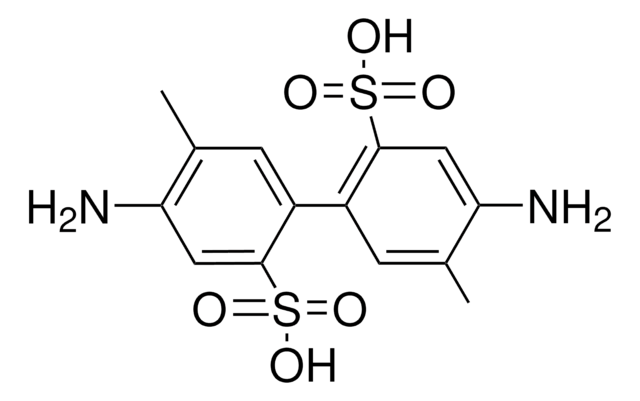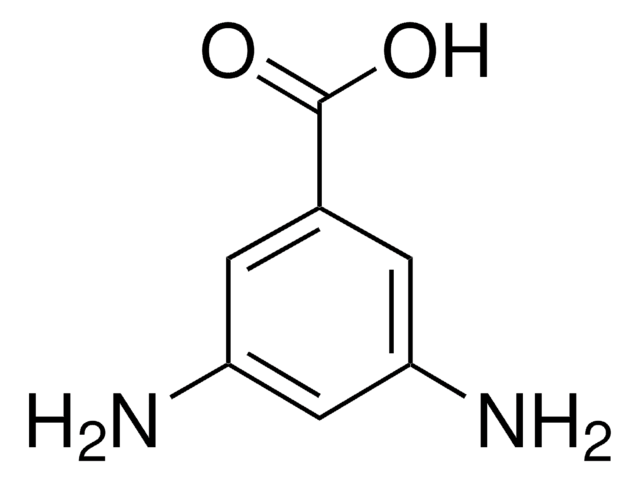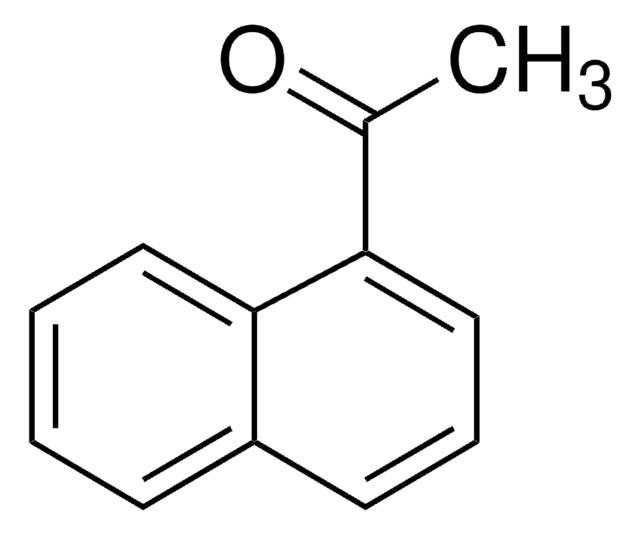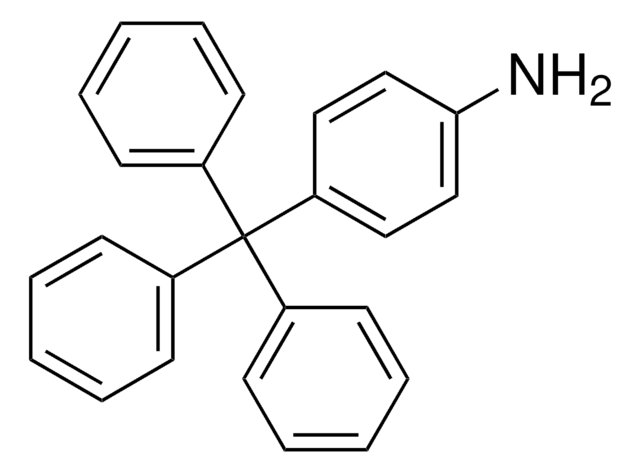462268
4,4′-Diamino-2,2′-stilbenedisulfonic acid
technical grade, 85%
Synonym(s):
Amsonic acid
Sign Into View Organizational & Contract Pricing
All Photos(2)
About This Item
Empirical Formula (Hill Notation):
C14H14N2O6S2
CAS Number:
Molecular Weight:
370.40
EC Number:
MDL number:
UNSPSC Code:
12352100
PubChem Substance ID:
NACRES:
NA.22
Recommended Products
grade
technical grade
assay
85%
mp
>300 °C (lit.)
SMILES string
Nc1ccc(\C=C\c2ccc(N)cc2S(O)(=O)=O)c(c1)S(O)(=O)=O
InChI
1S/C14H14N2O6S2/c15-11-5-3-9(13(7-11)23(17,18)19)1-2-10-4-6-12(16)8-14(10)24(20,21)22/h1-8H,15-16H2,(H,17,18,19)(H,20,21,22)/b2-1+
InChI key
REJHVSOVQBJEBF-OWOJBTEDSA-N
Related Categories
General description
Disodium salt of 4,4′-diamino-2,2′-stilbenedisulfonic acid may be used in the synthesis of dyes and optical brighteners or fluorescent whitening agents.
Certificates of Analysis (COA)
Search for Certificates of Analysis (COA) by entering the products Lot/Batch Number. Lot and Batch Numbers can be found on a product’s label following the words ‘Lot’ or ‘Batch’.
Already Own This Product?
Find documentation for the products that you have recently purchased in the Document Library.
Customers Also Viewed
N Hassanin et al.
Veterinary and human toxicology, 32(6), 536-540 (1990-12-01)
Metabolites of fusarium moniliforme isolates from different types of corn were characterized biologically and chemically. The biological assays included rat feeding, rat dermal tests and inoculation of embryonated eggs. Thin-layer chromatography, gas liquid chromatography, and mass spectrophotometry were used to
A K Singh et al.
Kidney international, 48(4), 985-993 (1995-10-01)
Chloride channels are ubiquitously distributed, biophysically varied and functionally diverse. Despite the known contribution of chloride channels to the physiology of various cell types and the pathology of several diseases, high affinity ligands are not available to study these channels.
S Lepke et al.
The Journal of physiology, 328, 27-48 (1982-07-01)
1. Dansylation of the red cell membrane produces inverse effects on SO(4) (2-) and Cl(-) equilibrium exchange. The former is enhanced by several orders of magnitude (Legrum, Fasold & Passow, 1980), the latter is inhibited. Both effects are potentiated after
M I Dobrikov et al.
Bioorganicheskaia khimiia, 24(11), 831-838 (1999-03-18)
Site-specific modification of single-stranded DNA by oligonucleotide derivatives of p-azido-O-(4-aminobutyl)tetrafluorobenzaldoxime sensitized by an oligonucleotide derivative of pyrenylethylamine was studied. Upon irradiation with the long-wave UV light (365-390 nm) of a DNA target-oligonucleotide reagent complementary complex, a considerable increase in the
N Muramatsu et al.
Journal of biomedical materials research, 17(6), 959-971 (1983-11-01)
Microcapsules having different numbers of sulfonic acid groups on their surfaces were prepared by the interfacial polycondensation method. Platelets adhered to these capsules, and the rate and degree of platelet adhesion were found to be remarkable on those microcapsules that
Our team of scientists has experience in all areas of research including Life Science, Material Science, Chemical Synthesis, Chromatography, Analytical and many others.
Contact Technical Service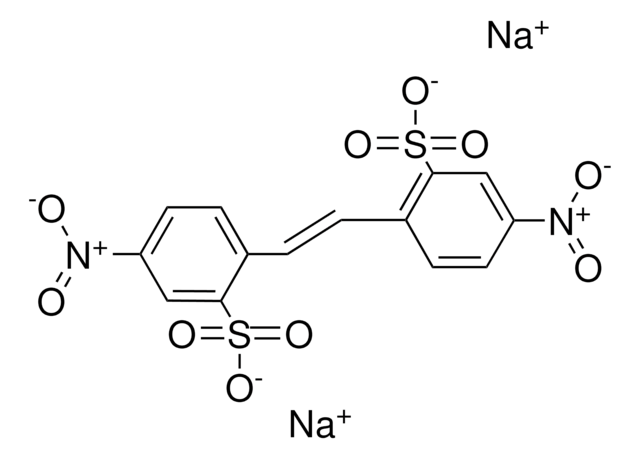

![4,4'-diamino[1,1'-biphenyl]-2,2'-disulfonic acid AldrichCPR](/deepweb/assets/sigmaaldrich/product/structures/132/504/f9fd296f-c246-427d-9118-23f7b80e2be1/640/f9fd296f-c246-427d-9118-23f7b80e2be1.png)

